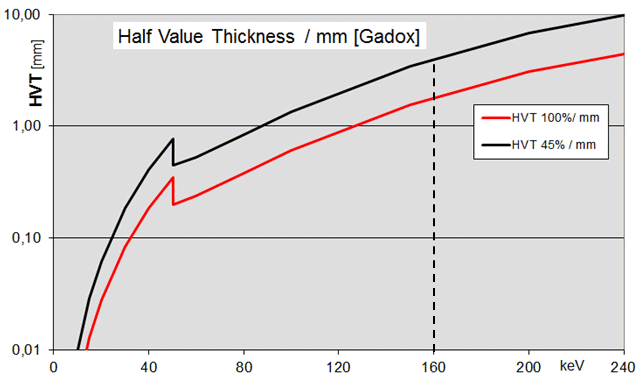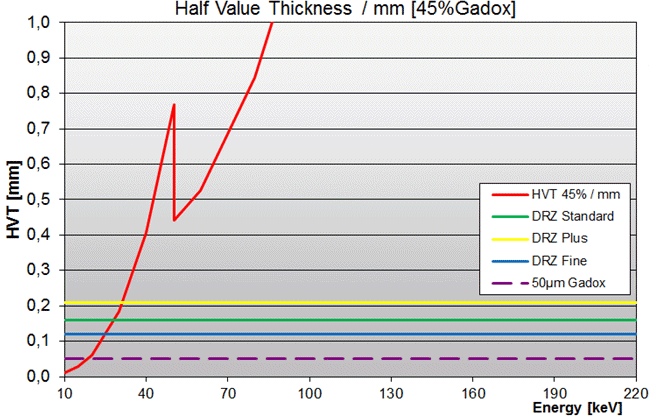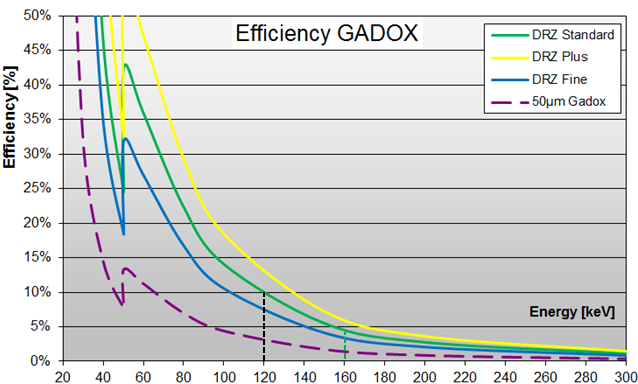In the
is shown the principle of conversion of X-ray quants to light quants.
Beside the thickness of the scintillator also the energy of the X-ray quants are a factor which indicates the efficiency of light conversion. To get an idea about the physics behind here is an example of the mostly used scintillator material
(Gadolinium oxysulfide Gd
2O
2S).

The half value thickness is the thickness that converts 50% of the incoming X-ray quants to light quants; the dotation of the scintillator is about 45%. From the picture is could be seen that for X-ray quants with an energy of 160keV a Gadox scintillator screen has to have a thickness of 4mm to convert 50% of the energy to light quants (black line). This would result in a spatial resolution of about 4mm ... .
As this spatial resolution is not sufficient the most scintillation screens are thinner - in the range of 50 .. 350µm.

The efficiency with higher energies is quite low and the next graph shows some real existing Gadox screens with their efficiency:

To give an example: The scintillator DRZ
standard - which is often used and about 150µm thick - has an efficiency at 120keV of about 10%; it decreases for 160keV down to 4% only.







